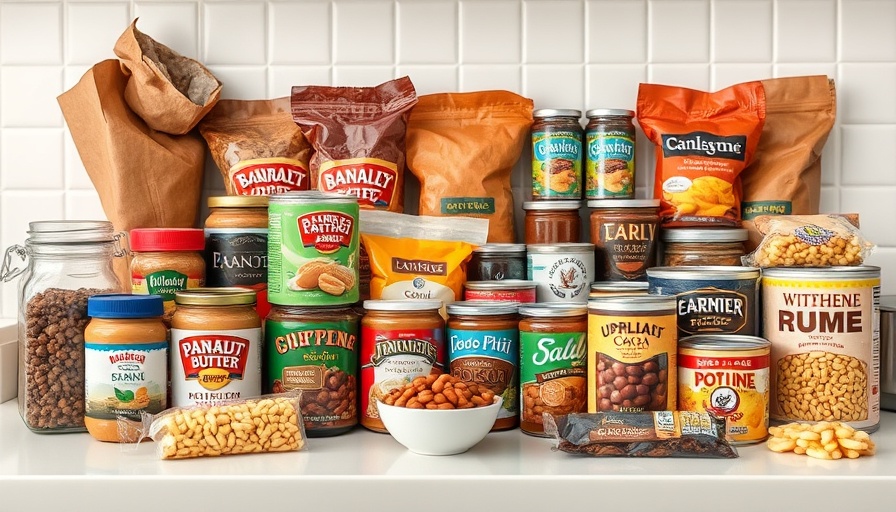
Why Stockpiling Survival Foods is Essential
In an unpredictable world, being prepared means having a plan and the right resources at hand. Whether it's natural disasters like hurricanes and earthquakes or emergencies such as power outages and pandemics, stocking up on survival foods ensures you can weather tough times. This isn't just about survival; it's about maintaining peace of mind knowing your family is secure and nourished.
Understanding Your Family's Needs
Before diving into a stockpile, it's crucial to assess your family's unique dietary requirements. Families with infants should stock up on specific formulas and baby foods. Additionally, consider any dietary restrictions present within your household. Everyone deserves to have food they enjoy and can digest easily in stressful times.
Top 30 Survival Foods Everyone Should Have
Preparedness experts emphasize that a well-rounded stockpile should contain a mix of non-perishable foods that offer nutrition and energy. Here are 30 recommended survival foods to consider adding to your pantry:
- Wheat Berries: Versatile and nutritious, wheat berries can be made into flour or cooked into a hearty meal.
- Dry Pasta: A cheap source of energy that also adds comfort to meals.
- Peanut Butter: Packed with protein and shelf-stable for an extended time, peanut butter is excellent for snacking or meal enhancing.
- Dried Fruits: Not only delicious, but these snacks are rich in essential nutrients.
- Canned Juices: To maintain sugar levels and hydration, stock canned juices—ideal when fresh fruit isn’t an option.
- Ready-to-Eat Canned Foods: From soups to meats, these can provide a hearty meal without cooking.
- Protein Bars: Perfect for on-the-go energy when traditional meals are not feasible.
- Salt: Essential not just for flavoring but also for food preservation.
- Non-Perishable Milk: Vital for calcium intake without the worry of refrigeration.
- Canned Soups and Chili: Ready-made meals that only need a can opener.
Keeping Hygiene in Mind: Don’t Forget the Water!
Amidst your food stockpile, water remains a critical resource. You should aim for at least one gallon of water per person per day for at least three days. Consider ranging from bottled water to larger storage containers for long-term supplies. Fresh water is vital not just for drinking but also for preparing meals and maintaining hygiene.
Planning for Special Dietary Needs
When building out your food supplies, it's easy to overlook special dietary needs such as gluten-free, low-carb, or vegetarian options. Having a well-thought approach to your family's dietary restrictions ensures that everyone is catered for and your stockpile is effective.
Storage Practices to Enhance Shelf Life
Proper storage is the key to ensuring your survival foods retain their nutrients. Foods must be kept in a cool, dry place, and using airtight containers can enhance their longevity. Make a point to rotate your stock regularly; this keeps your food supply fresh and ready.
Building a Community Resource
Beyond personal preparedness, consider how community support plays a role in disaster readiness. Neighbors banding together can help in sharing resources, exchanging food, and offering support. Don’t hesitate to encourage those around you to take similar steps, fostering a network of preparedness.
Conclusion: Take Action Today!
Preparing your survival stockpile isn’t just an errand, it’s a crucial step toward self-sufficiency and peace of mind. By prioritizing your family's needs, thoughtfully curating your food supplies, and ensuring proper storage, you’re setting the stage for resilience in uncertain times. Start stockpiling today and empower yourself with the knowledge needed for any disaster!
 Add Row
Add Row  Add
Add 




 Add Row
Add Row  Add
Add 

Write A Comment